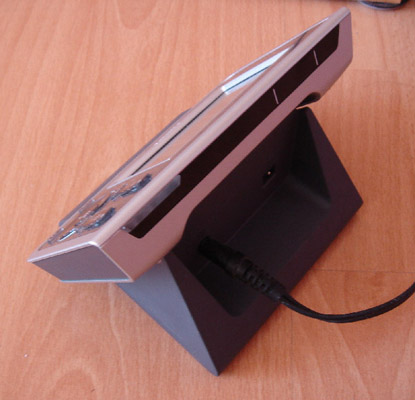Introduction
I recently got my hands on the upcoming Philips RC 9800i
remote control.
The Philips line of Pronto remotes is renowned for its flexibility
and robustness. The idea behind the original Pronto, and of course its
siblings, is to provide the designer with a blank slate that can be
used to create any theme, design idea, or graphic that comes to mind.
While this proved great for people with a graphics background, this did not
always pan out well for ordinary folks.
The famous
www.remotecentral.com
website provided some relief by allowing users to share their designs and
ideas. However, the software for the original Pronto was still oriented more
towards integrators and graphics designers than for regular users.
It is
still very common to see brand new Pronto owners desperately seeking
programmers, or at least some type of help, in converting their ideas into the
perfect remote control scheme.
Although the Pronto design has been improving throughout the years, the
overall blank slate concept has not changed much. The problems many users
had with this and the proliferation of universal remotes "anyone can use",
did not escape Philips’ notice, and the RC 9800i is their answer.
The Design
Philips essentially designed the RC 9800i to be an LCD panel remote control
system that anyone can set up. But,
Philips did not end there.
The innovative design is a complete paradigm
shift in more ways than one. The new remote is a landscape unit, allowing
content (images and EPG data) to be viewed directly on it. The RC 9800i does
not require a computer or external software to program it, and it uses a Wi-Fi connection to be able to stream content, and in the future, possibly
provide bi-directional control of your computer!
It’s important to note that this particular remote is not intended to
supersede any existing Pronto remote model. It is a completely different
breed of animal than other Prontos and should be treated as such.
 Programming
Programming
To program a regular Pronto remote, you would need numerous graphical
images, access to a computer, and hopefully a lot of experience with
Photoshop.
Now, forget all of that with the RC 9800i. It is
completely self-sufficient and does not need anything except a human
operator to tell it what works and what doesn’t.
The remote essentially asks you what rooms you have, what devices are in
each room, and then asks you about activities you perform with those devices.
Using a series of questions, the remote figures out how your system is
interconnected.
It knows whether your receiver or your TV volume controls should be used for
muting or adjusting audio levels. It figures out how your satellite or cable
box likes channels to be changed, and it figures out how to change video
inputs on your projector.
Philips adopted many of the concepts that are popular in RemoteCentral
Pronto scripts. The overall idea of separating the activities from the
actual devices that drive them is pretty central to those scripts.
The remote essentially builds optimized macros for shifting
from one activity to another. It even times how long it takes for your TV to
turn on so that it won’t change channels too quickly.
The "programming" typically take a couple of hours for a complex system,
during which, the owner works his way through a series of wizards and
continually answers more questions about his system. The wizard is
ingenious and really gets down to business when it comes to figuring out how
you hooked up your system.
The questions are easy to answer, so if you know
how to get your hi-fi system to work, you should be able to easily answer the
questions.
The photo below shows the RC 9800i on its charging stand.

Click Here to Go to Part II.